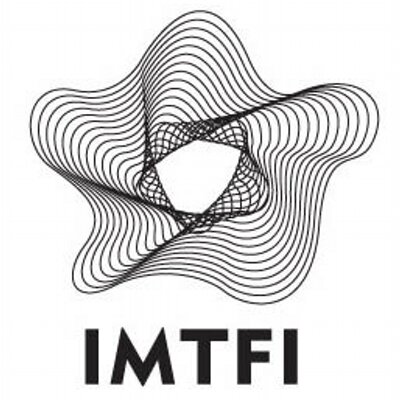NSF REU
Private Digital Currencies and Closed Payment Communities: Law, Regulation and Financial Exclusion After Bitcoin
Summary of Findings
This project was an interdisciplinary collaborative research exercise, bringing together the technical expertise in Computer Science with application, grounding, and methodologies used in Anthropology. The researchers were given training in Anthropoloy research framings and techniques, which they utilized in their reserch and cataloguing.
By adopting Social Science training in both phases of the project, the undergraduate researchers were able to identify the social grounding of each blockchain system. This can be observed in their code walkthrough projects which followed how programmers built new functionality into blockchain systems. The code walkthroughs are available to view here. Training in social science coding practices helped the researchers extract key themes and trends within the systems they were observing.
This collaborative focus helped address core questions in this research project: Do new digital currencies create new social and economic exclusions? What do these innovations say about changing understandings of money and law? What happens when new corporate entrants into payment imagine they are innovating in money, not just its transmission, and seek to "disrupt" not just payment, but professions like notaries and escrow agents? How do regulators respond to concomitant challenges to the public interest in payment and in law itself?
This focus helps observe movements and meanings of both technology and legislative changes stemming from cryptocurrencies and blockchain system development.
Phase I
Phase I of this project with undergraduate Computer Science researchers Yicong Huang, Zoe Nie, and Brian Minh Nguyen performed an introductory study of approximately 130 different blockchain and ICO systems.
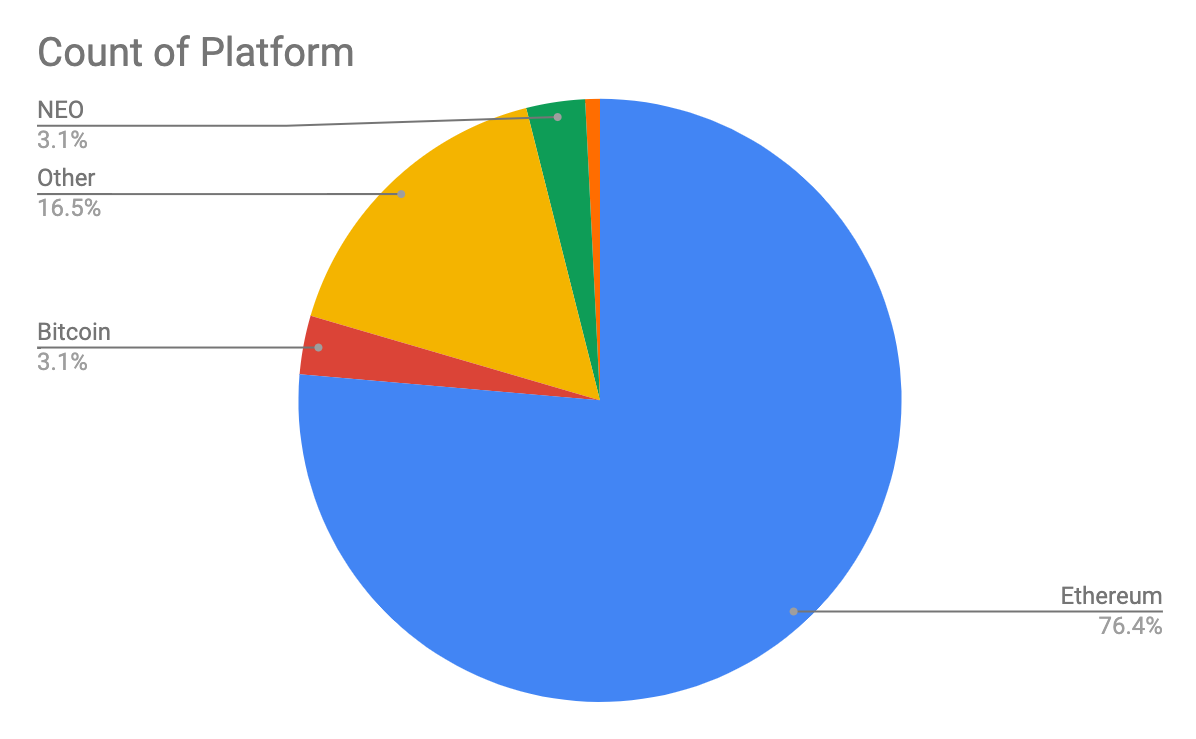
Platform analysis in Phase I: the majority of systems were built on the Ethereum platform. Developed in 2015 to "build [a] generalised technology ... on which all transaction-based state machine concepts may be built" (Wood 2014), the system is a manipulative and more flexible blockchain system which allows programmers to design specific, peer-to-peer proof-of-work mechanism, accounted in a decentralized ledger system. This allows more control over any new cryptocurrency systems such as Bitcoin or NEO, but as seen above, alternative systems are still utilized.
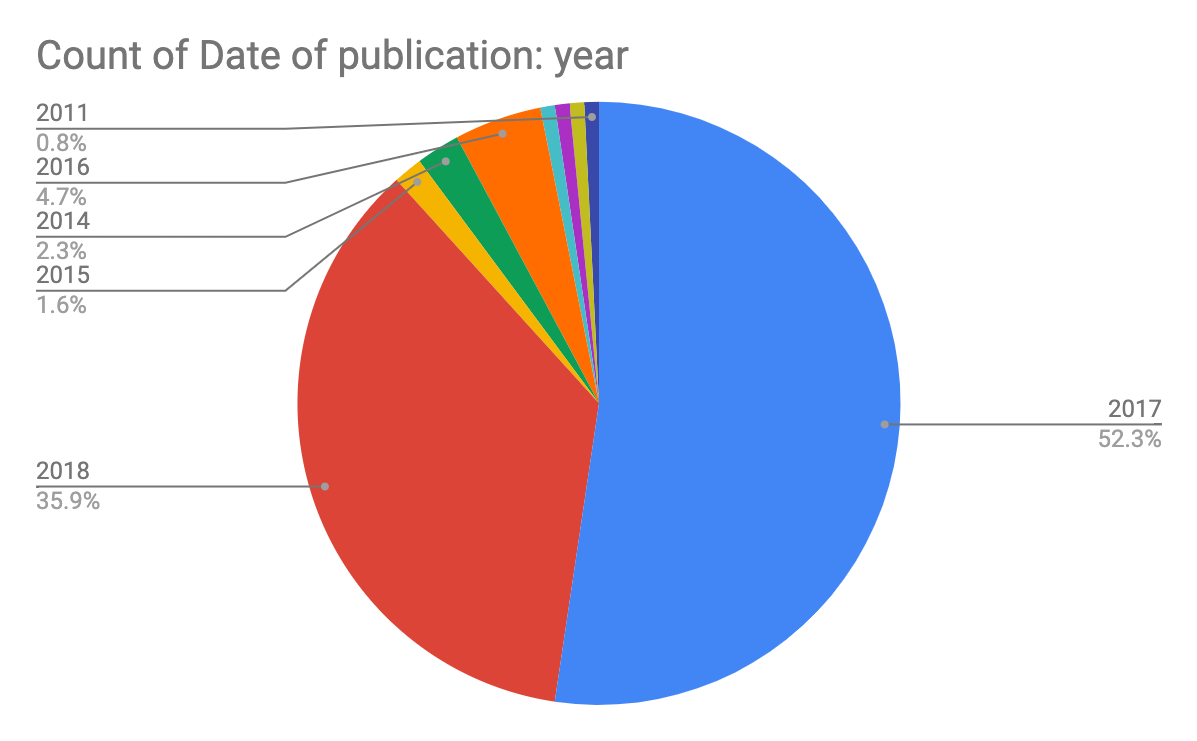
A greater volume of projects researched were completed between 2017 and 2018. This firstly follows the introduction of and growing comfort with the Ethereum platform, facilitating greater manoeuvrability in creation as explained above, but also likely relates to the global value increase of bitcoin in 2016 which motivated interest in cryptocurrency development.
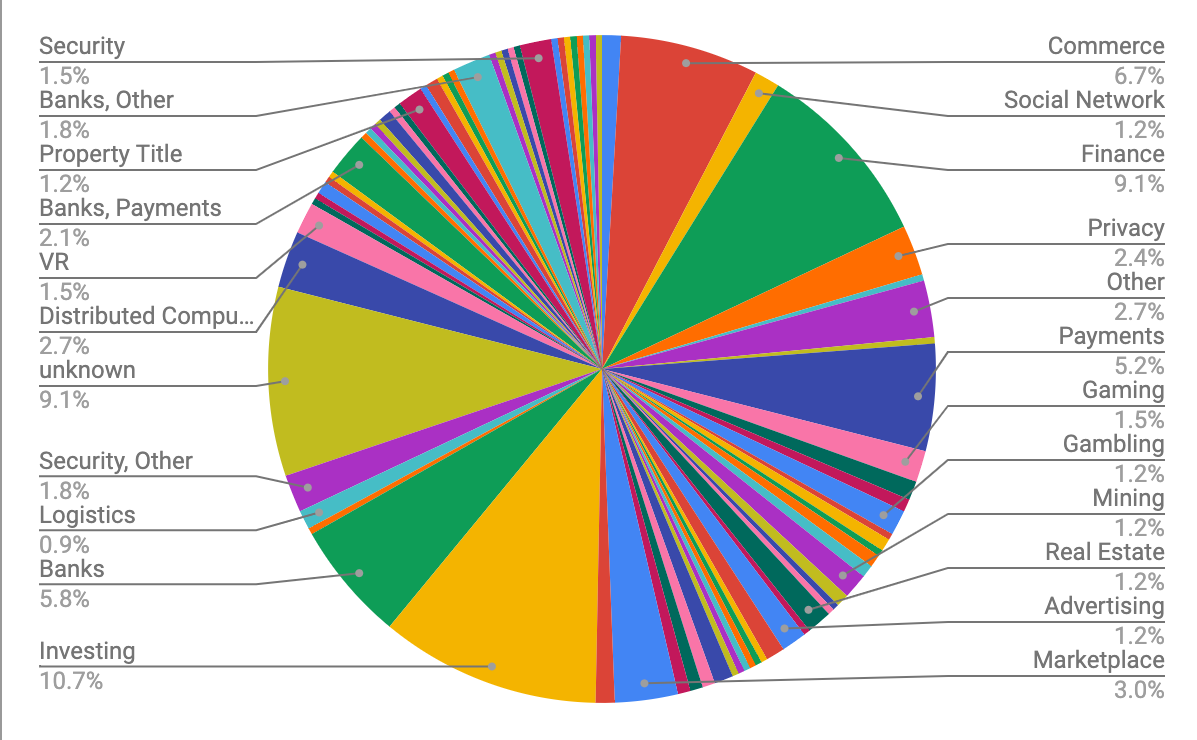
The above chart represents the division of cryptocurrencies researched in Phase I divided by industry sector. While many different sectors are represented, it is interesting to note that the four dominant known sectors: commerce, finance, investing, and banks (totaling 43%) were all money and finance-based in performance. This suggested that despite the diversity present in cryptocurrency systems, the most popular and dominant are explicitly connected to financial management.
Phase II
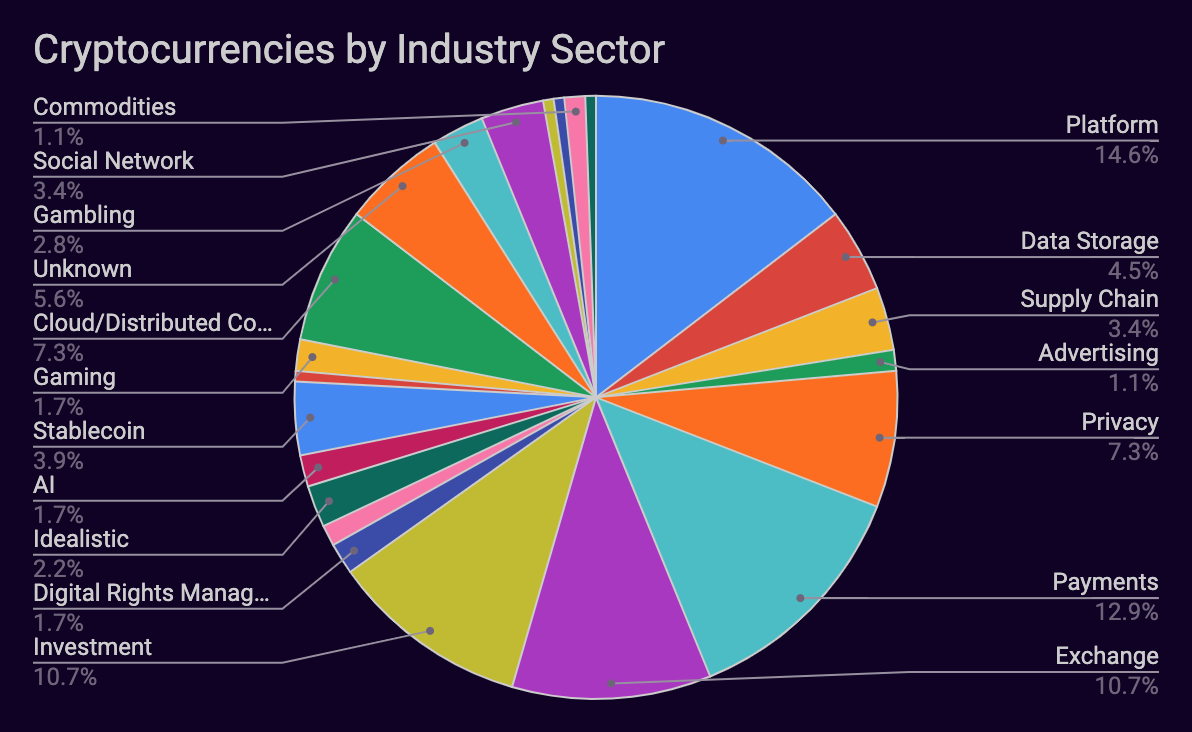
Echoing the findings from Phase I, dominant industry sectors seem to be finance-based, with payments, exchange, and investment systems each occupying more than 10% of the industry sector. Platforms are the biggest sector, mostly but not always enabling a form of financial modification and hosting. Privacy and cloud/distributed computing systems are also strongly represented in the systems analyzed.
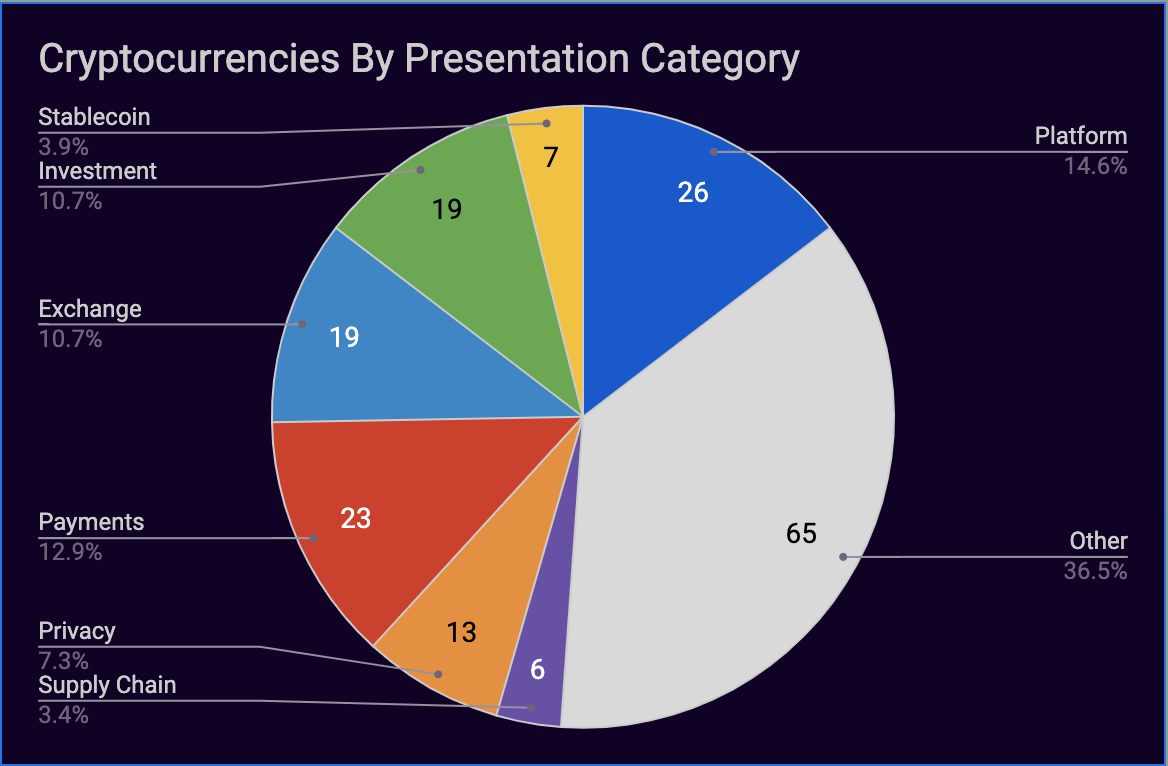
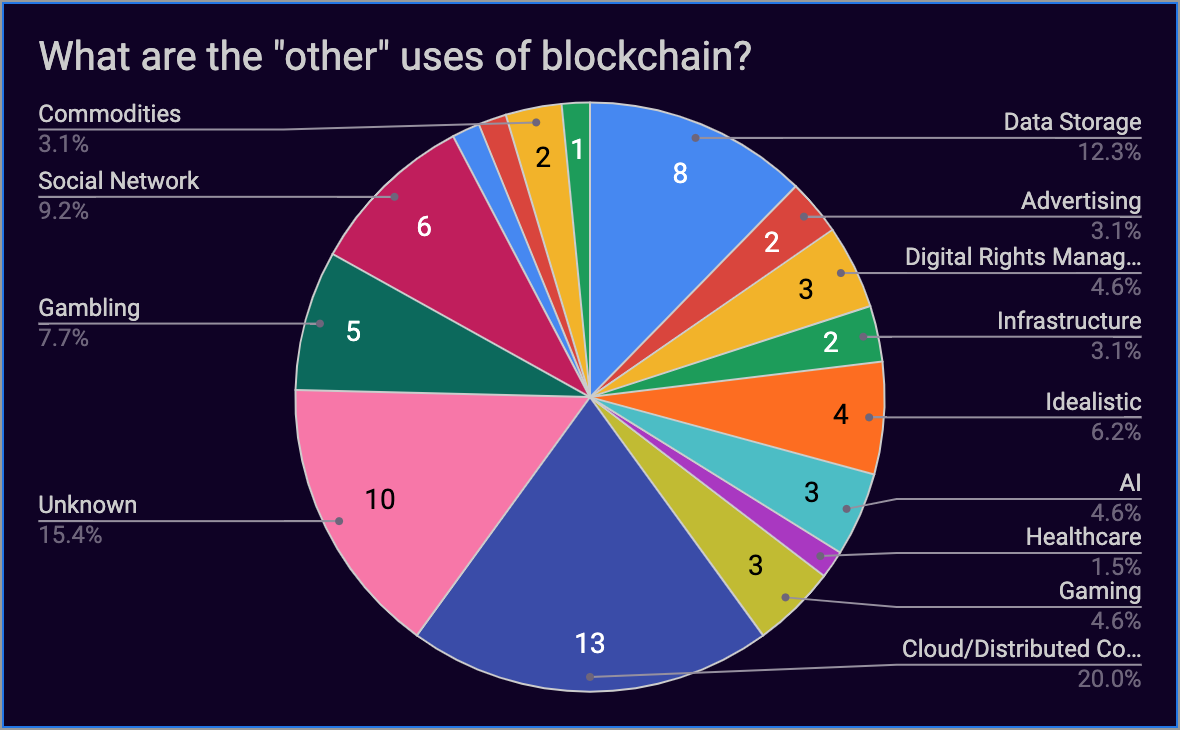
In their final presentation the researchers looked closely at payment tokens, exchange tokens, platforms, stable coins, privacy platforms, and supply chain solutions, while also observing other obscure use cases in their research. For more information and to view this presentation slideshow, please scroll to the end of this webpage.


At the end of both phases, discrepancies between the locations of the incorporations and locations of team members were evident. The team members of these systems were often not in the location of the incorporation. While this firstly highlights an awkward disparity in the proposed identities of the systems, it also speaks to the global and interconnected nature of coding, and prospective international connections present within any one cryprocurrency system.
Of particular interest is the seemingly inverse representation between the two charts of Singapore and China. A greater proportion of incorporations are based in Singapore, but a greater proportion of team members are based in China. On the two world maps above, the concentration and size of the two circles seems to almost flip. In the 2018 California-Shanghai Innovation Dialogues: From Fintech to Insurtech in China and the US, the Phase I researchers and PI Dean Bill Maurer observed that this trend may suggest a large number of cryptocurrency systems registering in Singapore, but representing a growing and dominant population of Chinese based coders. This can be observed in more explicit detail when looking at the location of incorporations and teams by city in the pie charts below. Incorporations are dominantly in Singapore, but a greater proportion of team members are located in China in comparison to the incorporations chart.
Of additional note is a Caribbean incorporation location not represented by team members in the same location. Together with the above observation on Singaporean registration, an emerging trend seems to be a connection between cryptocurrency incorporation registration and low-tax unregulated areas of the world. According to a 2018 Regulation of Cryptocurrency Around the World report written by the Law Library of Congress, Singapore, the Caymen Islands, and Barbados all refrain from regulating cryptocurrencies, but expect an acknowledgement of local anti-money laundering laws.
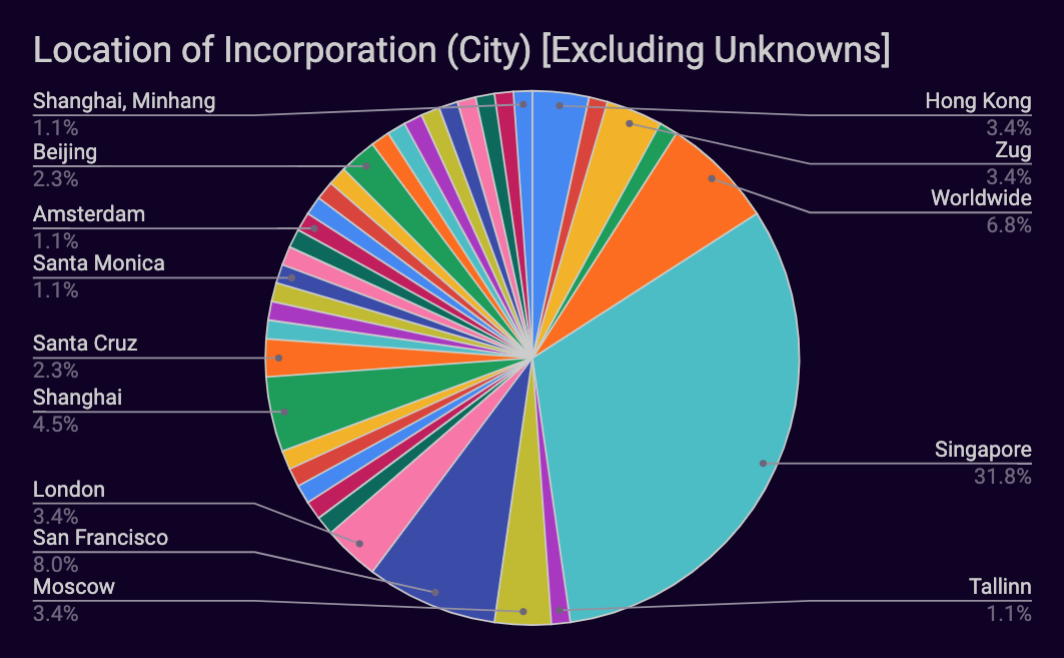
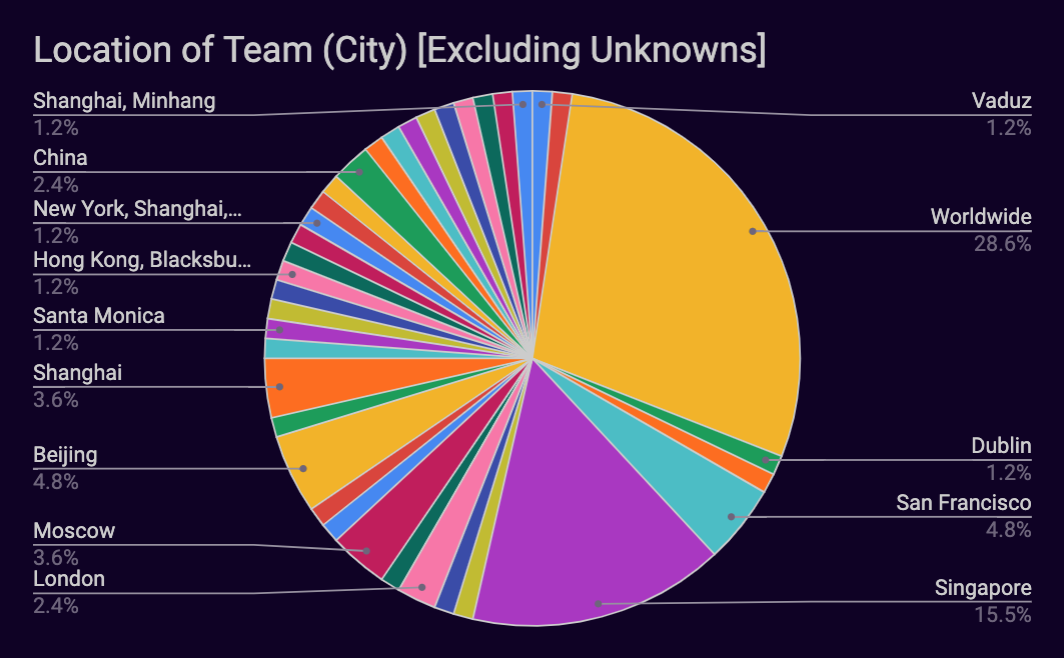
The total sample size of these findings was 180 cryptocurrency systems, with attention and care given to cover dominant and popular topical types of systems in cryptocurrency developments. Findings from this project must, therefore, be taken as observed possible trends in cryptocurrency use and development. Previous, ongoing, and forthcoming research conducted under this NSF project will help answer what new social and economic exclusions, changing understandings of money and law and the act of regulation are in this rapidly changing money and payments space.
For more information on these findings, please contact Farah Qureshi through farahq@uci.edu




